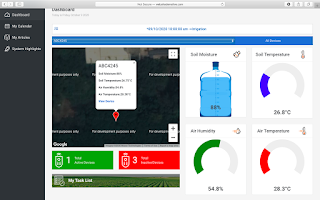Immediate Need Of Automation In Indian Agricultural Sector
Automation is not a choice any more. It is now essential for survival. And it is true for all sectors of economy, including agriculture. The industrial revolution started with the textile industry in England. The revolution saw a large-scale use of machines and automation in clothes manufacturing. And that slowly but surely spread out in all other sectors. And today, all industries use automation to a very large extent because that is the only way to reduce production cost per unit and maximize profit.
Learning the nature’s laws and using the knowledge to produce food for a large population were what set humans apart from the other animals. And humans have been honing that skill since the last ten thousand years or more. With a population of 7.5 billion, the demand from the skill is huge and it is only going to get worse in the coming days. With a projected population of 10 billion by 2050 and the scarcity of fresh water looming large, agriculture is going to see far greater challenges in the immediate future. Producing far greater amount of food using far less amount of resources, e.g. water, fertilizer and pesticides, is going to be the challenge that the farmers are going to face in very near future. And the only way that demand can be met in a sustainable and profitable way is – automation.
The whole world is moving in that direction now. Automated machinery is used for all stages of farming today: ploughing, seeding, irrigation, weeding, applying fertilizers and pesticides, harvesting, packaging, storage and transportation. And effective use of data analytics feeding into automation results in lower demand on irrigation, better ratio of micronutrients in soil leading to better yield, controlled use of pesticides leading to healthier crop, quick and timely harvesting of the produce and low wastage of produce. This entire cycle leads to higher amount of food for the population, better and healthier produce for consumers and better profitability for the farmer. It’s a win-win for all stakeholders of the ecosystem.
Of course, every kind of machinery has its own pre-requisites for it to be useful and adoption of automation should be a gradual process. Farmers need to educate themselves on the possibilities that the future holds and start working towards adopting automation in a steady manner. There are options, such as geoBHUMI, in the market today that can help them monitor the level of water and advise them on when to irrigate the farm plot or when fertilizers to use. This is the simplest but most critical level of automation that the farmers can and should adopt immediately.
Large farm plots can use automated ploughing, seeding and harvesting robots – however, farm lands are typically split into many small pieces in India with only a few large tracts of land belonging to one farmer producing the same crop. Farmers should also work with owners of cold storage and make sure that the storage units have sensors to keep moisture and temperature at optimum levels to reduce wastage of produce during storage.
Automated data collection, analysis and action will go a long way in solving India’s food problem of tomorrow.
Subhobrata Biswas - Chief Architect & Fellow, Mobileum (India) Pvt. Ltd
Ex Alumni – IIT Kharagpur



Comments
Post a Comment